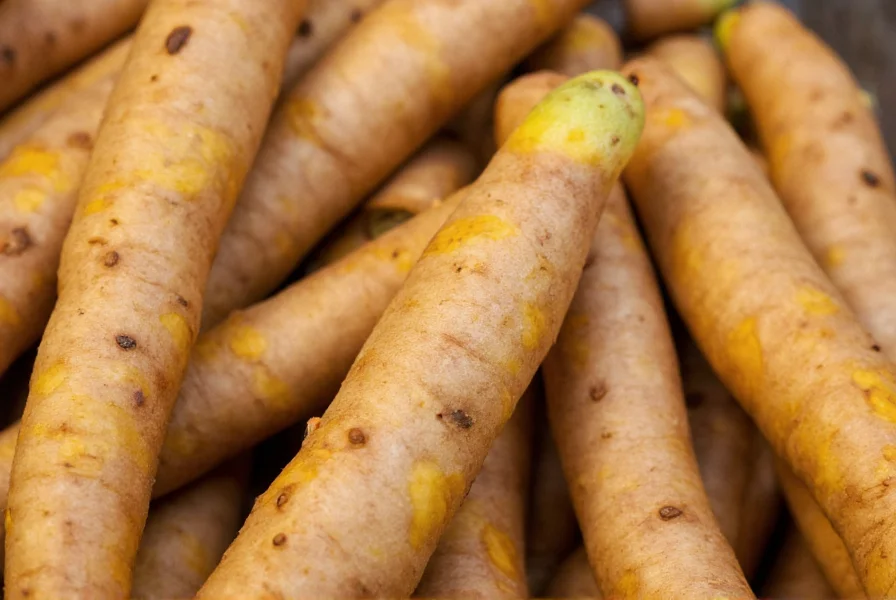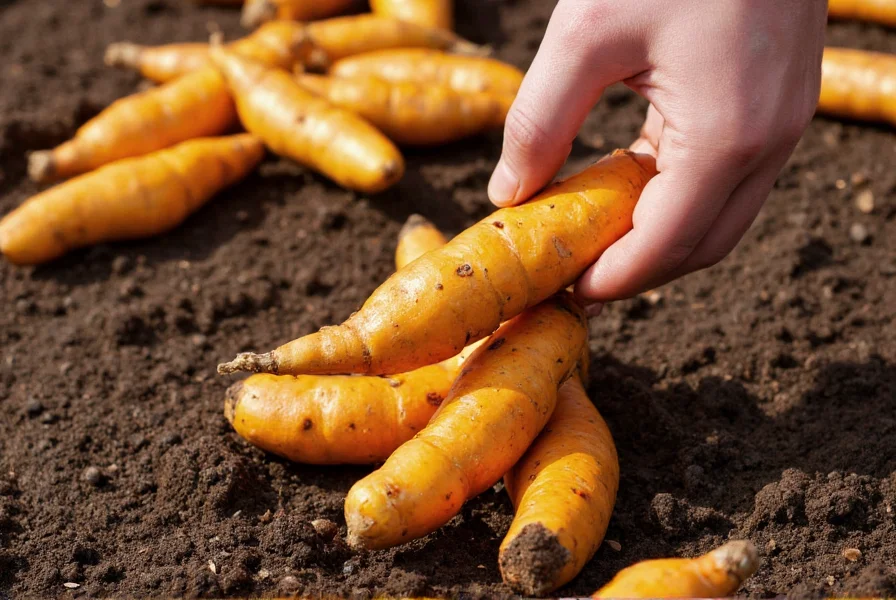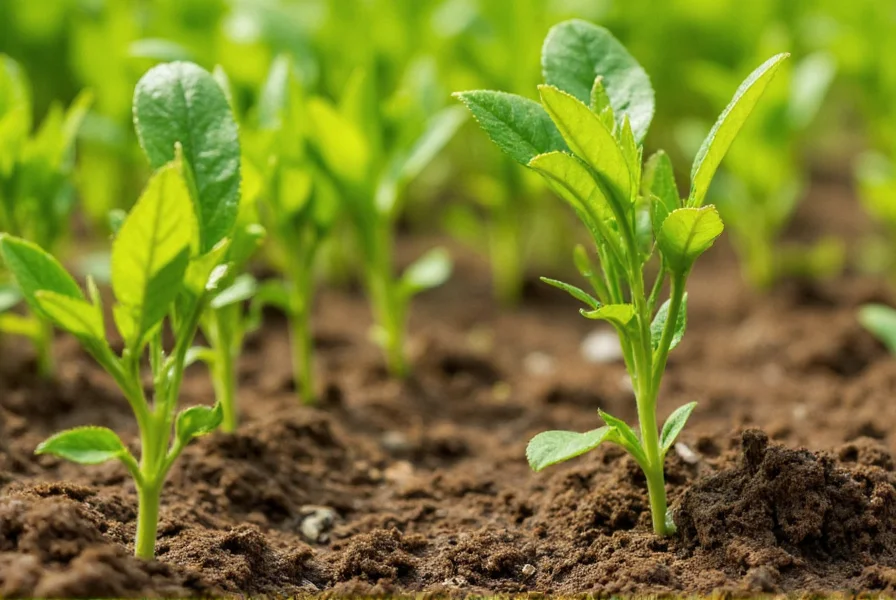Curcuma longa, commonly known as turmeric, is a tropical perennial that produces the vibrant orange rhizomes used worldwide for culinary, medicinal, and dye purposes. Growing this valuable spice plant successfully requires understanding its specific environmental needs and growth cycle. This comprehensive guide provides science-based cultivation techniques for both home gardeners and small-scale producers.
Understanding Turmeric's Botanical Requirements
Turmeric belongs to the Zingiberaceae family, sharing characteristics with ginger and cardamom. Unlike what many beginners believe, turmeric doesn't produce seeds for propagation—it grows exclusively from rhizome divisions. The plant develops broad, oblong leaves on tall pseudostems and produces white or yellow flowers when mature, though most growers focus on rhizome production rather than flowering.
The optimal turmeric growing conditions mimic its native Southeast Asian habitat. This plant thrives in USDA hardiness zones 8-11 but can be grown as an annual in cooler climates with proper timing. Understanding these fundamental requirements separates successful turmeric growers from those who struggle with poor yields.
Climate and Environmental Requirements for Turmeric Cultivation
Turmeric demands specific climate conditions to produce quality rhizomes. The ideal temperature range spans 68-86°F (20-30°C), with humidity levels above 50%. Temperatures below 50°F (10°C) will stunt growth, while frost will kill the plant entirely. In regions with distinct seasons, turmeric growing season typically runs from spring through fall, with harvest occurring before first frost.
While turmeric prefers partial shade in tropical regions, it requires more direct sunlight in temperate zones—approximately 6-8 hours daily. The plant cannot tolerate waterlogged conditions but suffers equally from drought stress. This balance makes proper irrigation scheduling one of the most critical aspects of how to grow turmeric at home successfully.
| Climate Factor | Optimal Range | Tolerance Limits |
|---|---|---|
| Temperature | 68-86°F (20-30°C) | Below 50°F (10°C) stunts growth |
| Humidity | 50-80% | Below 40% requires increased watering |
| Sunlight | Partial shade (tropics) to full sun (temperate) | Full sun in tropics causes leaf burn |
| Growing Season | 7-10 months | Shorter seasons yield smaller rhizomes |
Soil Preparation for Optimal Turmeric Growth
The best soil for turmeric cultivation is loamy with excellent drainage and a pH between 5.5-7.5. Heavy clay soils retain too much moisture, leading to rhizome rot, while sandy soils drain too quickly, requiring more frequent watering. Before planting, amend the soil with 3-4 inches of well-rotted compost or aged manure to improve structure and fertility.
Conduct a soil test before planting to determine existing nutrient levels. Turmeric responds well to balanced organic fertilizers with emphasis on potassium and phosphorus. Avoid high-nitrogen fertilizers which promote excessive leaf growth at the expense of rhizome development. Raised beds 6-8 inches high improve drainage in areas with heavy rainfall or clay soils.
Planting Turmeric Rhizomes: Step-by-Step Process
Successful turmeric planting begins with selecting quality rhizomes. Choose firm, plump pieces with multiple buds ("eyes"), approximately 1.5-2 inches long. Soak rhizomes in a solution of 1 part cow dung slurry to 5 parts water for 30 minutes before planting to prevent fungal infections—a traditional organic turmeric growing method used by experienced cultivators.
Plant turmeric rhizomes 1.5-2 inches deep with buds facing upward, spacing them 8-10 inches apart in rows 18-24 inches apart. In container growing, use pots at least 12 inches deep with drainage holes, filling with a mix of potting soil and compost. Water thoroughly after planting, then maintain consistent moisture without saturation.

Watering and Fertilization Schedule
Turmeric requires consistent moisture throughout its growing season, particularly during rhizome formation (months 4-7). Water deeply 2-3 times weekly, providing approximately 1 inch of water each time. Reduce watering frequency as harvest approaches to allow rhizomes to mature properly. Container-grown plants typically require more frequent watering than in-ground plants.
Apply balanced organic fertilizer every 4-6 weeks during active growth. A 5-10-10 NPK ratio works well for turmeric. Alternatively, use compost tea or well-rotted manure. Stop fertilizing 6-8 weeks before expected harvest to allow rhizomes to develop their characteristic color and flavor compounds. Mulching with straw or shredded leaves helps maintain soil moisture and temperature while suppressing weeds.
Common Turmeric Plant Problems and Solutions
Even with proper care, turmeric growers may encounter several common issues. Yellowing leaves often indicate overwatering or poor drainage—adjust irrigation and improve soil structure. Leaf spot diseases appear as brown or yellow spots on foliage; remove affected leaves and apply neem oil solution. Rhizome rot, characterized by soft, mushy rhizomes with foul odor, requires immediate removal of affected plants and improved drainage.
Pests like aphids and spider mites can be controlled with insecticidal soap sprays. In regions with nematode problems, practice crop rotation and consider planting marigolds as companion plants. If your turmeric isn't producing substantial rhizomes, check your fertilizer balance—excess nitrogen promotes leaf growth at the expense of underground development.
Harvesting and Post-Harvest Processing
Turmeric is ready for harvest 7-10 months after planting, when leaves yellow and stems begin to dry. Stop watering 2-3 weeks before harvest to allow rhizomes to mature. Carefully dig around plants with a garden fork to avoid damaging rhizomes. Harvest when approximately 70% of leaves have yellowed for optimal curcumin content.
After harvesting, clean rhizomes gently with a soft brush under running water. For fresh use, store in a cool, dark place. For longer storage, boil rhizomes for 45-60 minutes, then dry in the sun or a dehydrator before storing in airtight containers. Properly dried turmeric rhizomes can be stored for up to one year without significant quality loss.

Special Considerations for Different Growing Environments
Growing turmeric in containers requires special attention to soil moisture and nutrient levels. Use pots at least 12 inches deep with excellent drainage, and monitor water needs daily during hot weather. In tropical climates, provide afternoon shade to prevent leaf scorch. For cooler climates, start turmeric indoors 4-6 weeks before last frost and use black plastic mulch to warm soil.
Commercial turmeric growers should implement proper crop rotation (every 3-4 years) to prevent soil-borne diseases. Intercropping with legumes can improve soil nitrogen levels without compromising rhizome development. Remember that turmeric requires a long growing season—in regions with short summers, consider using season extenders like row covers to maximize growth time.
Frequently Asked Questions About Turmeric Growing
How long does it take to grow turmeric from planting to harvest?
Turmeric requires 7-10 months from planting to harvest. The exact time depends on climate conditions and variety, with most growers harvesting between 210-300 days after planting. In optimal conditions with consistent warmth and moisture, some varieties may be ready at the earlier end of this range.
Can turmeric be grown indoors successfully?
Yes, turmeric can be grown indoors in containers with proper conditions. Use a pot at least 12 inches deep with drainage holes, place in a location receiving 6-8 hours of bright, indirect light daily, and maintain temperatures between 68-86°F (20-30°C). Indoor growers should mist plants regularly to maintain humidity and water when the top inch of soil feels dry.
What are the signs that turmeric is ready for harvest?
Turmeric is ready for harvest when approximately 70% of the leaves have yellowed and stems begin to dry. The lower leaves typically yellow first, progressing upward. Another indicator is the appearance of the rhizomes themselves—when carefully dug up, they should feel firm and have developed their characteristic deep orange color. Harvest timing significantly affects curcumin content, with optimal levels reached at 7-10 months.
How do I store harvested turmeric rhizomes?
Fresh turmeric rhizomes can be stored in the refrigerator for 2-3 weeks when placed in a perforated plastic bag with a paper towel to absorb excess moisture. For longer storage, dry the rhizomes by boiling for 45-60 minutes then sun-drying or using a dehydrator at 140°F (60°C) until completely dry. Properly dried turmeric can be stored in airtight containers in a cool, dark place for up to one year without significant quality loss.
Why are my turmeric plants not producing large rhizomes?
Small rhizome production typically results from insufficient growing time, improper fertilization, or inadequate sunlight. Turmeric requires 7-10 months to develop substantial rhizomes—harvesting too early yields small roots. Excess nitrogen fertilizer promotes leaf growth at the expense of rhizome development. Ensure plants receive adequate sunlight (6-8 hours daily in temperate zones) and maintain consistent moisture throughout the growing season, particularly during months 4-7 when rhizomes form.











 浙公网安备
33010002000092号
浙公网安备
33010002000092号 浙B2-20120091-4
浙B2-20120091-4